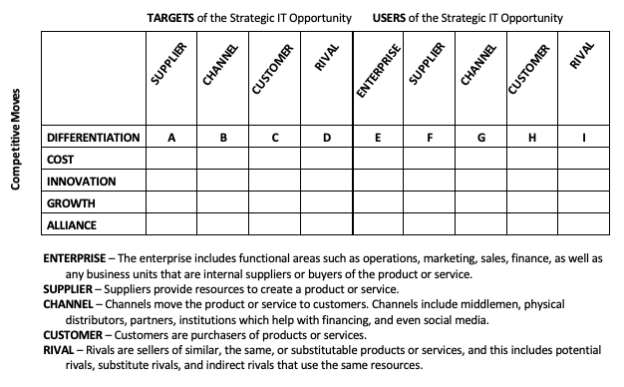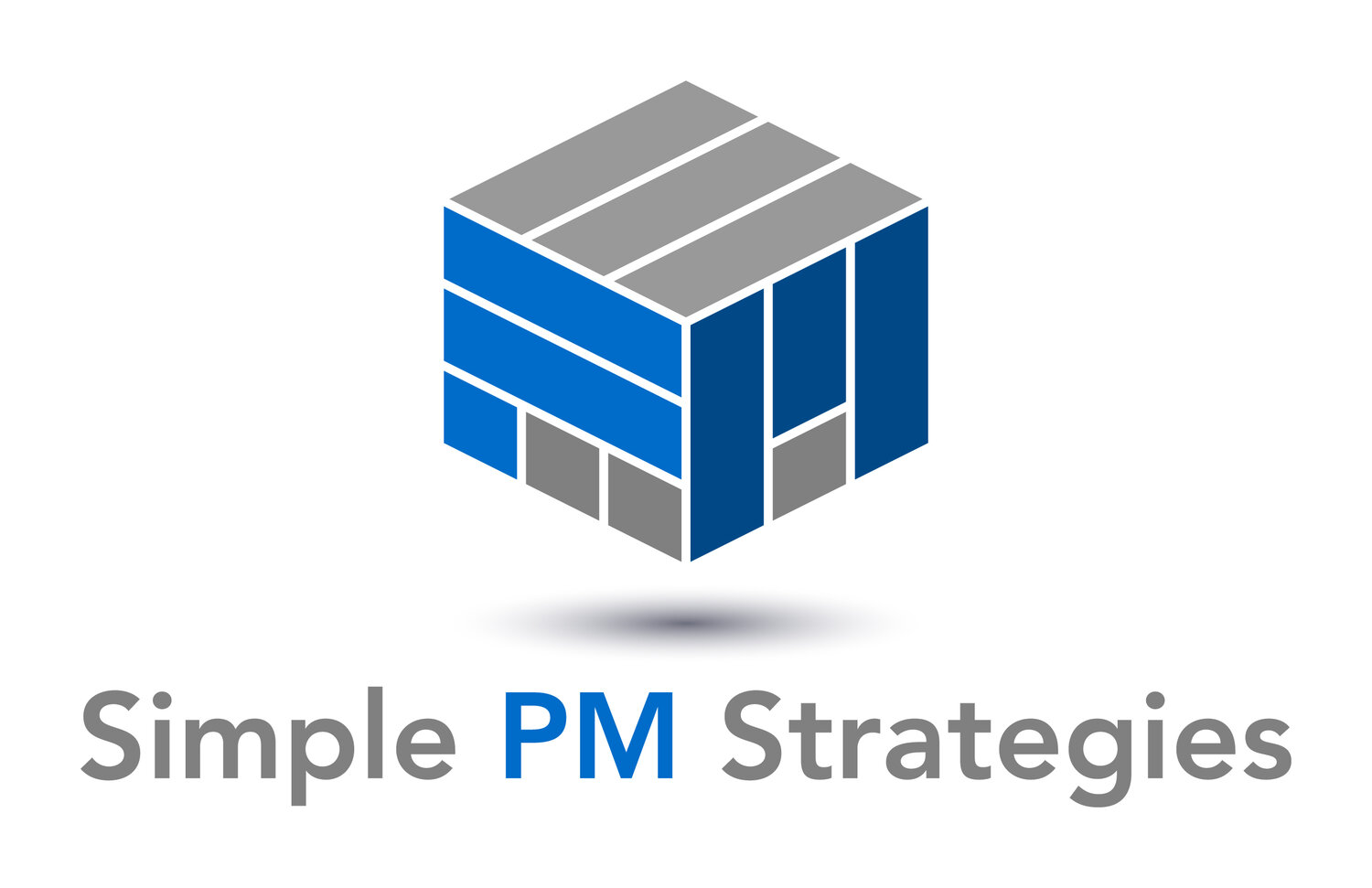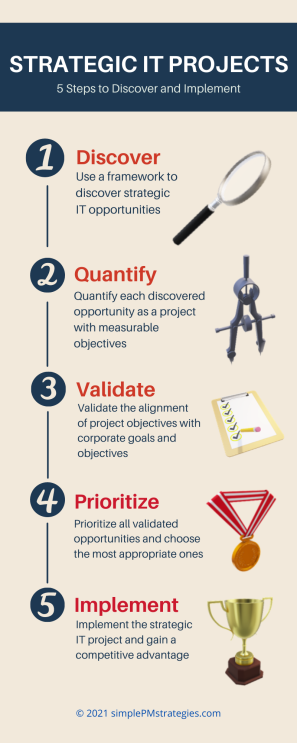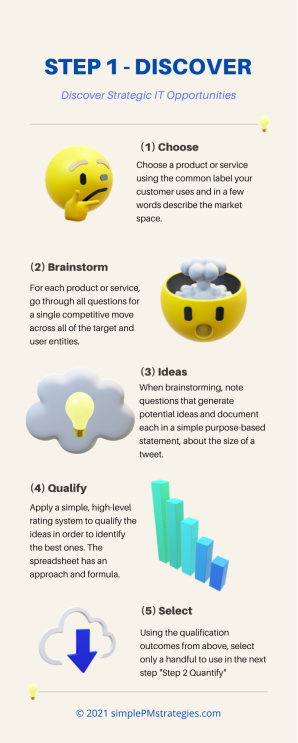Discover and Implement Strategic IT Projects That Differentiate to Increase Market Share
Strategic IT Projects Pt02 – Using Projects to Differentiate for a Competitive Advantage
This is Part 02 in the series titled “Strategic IT Projects”, the goal of which is to help you discover, validate, and implement, through a simplified framework, strategic IT solutions that deliver a strategic, competitive advantage.
Discover Competitive Advantages Through Differentiation
Strategic IT Projects in 5 Steps
Below left image: STRATEGIC IT PROJECTS in 5 Steps – From Discovery to Implementation.
Step 1 Discover
Below right image: STEP 1 – DISCOVER (The first step, and the first part of which this article is about).
|
|
|
Step 1 in the “Strategic IT Projects Discover to Implement” steps, is to discover opportunities by brainstorming with questions about your product or service and potential COMPETITIVE MOVES you can make across the product or service’s competitive space.
We start with the COMPETITIVE MOVE of DIFFERENTIATION.
Competitive Moves
There are five types of competitive moves an organization can make to increase its advantage for a product or service in its market space:
- Differentiation
- Cost
- Innovation
- Growth
- Alliance
These moves have four characteristics to keep in mind as you are brainstorming questions for potential opportunities:
- Moves can have opposite effects depending on how they are implemented, such as working either offensively or defensively.
- Moves can be used in combination, so two or more together.
- Moves can be of a different degree, such as short term or long term, minor or major.
- Moves can be related but also juxtaposed, such as evolving a successful, established product or service and coincidentally introducing a completely new solution to the same customer problem at the risk of cannibalizing the current success.
The first competitive move we look at is DIFFERENTIATION, the subject of this article.
Differentiation
Differentiation includes moves made to make your product or service so different or distinct in the eyes of the customer from anything else or any other options available that its value is substantially increased because customers see it as essential and not substitutable.

Differentiation can position your product as essential and not substitutable
There are five types of differentiation: (1) Offering, (2) Price, (3) Location, (4) Promotion, (5) Positioning.
Rather than inundate you with more definitions we’ll start brainstorming with questions around the types of Differentiation across the competitive space and provide the definitions in context.
To help understand the definitions in context, the terms from the strategic options chart below are in UPPERCASE so you can cross-reference between the questions and the location in the chart.
Targets and Users
There are nine entities that can be the subject of a Differentiation Competitive Move, each with their own cell.
The nine entities are made up of the enterprise, suppliers, channels, customers, and rivals, where the last four can be either targets of the innovation or users of the innovation.
If the entity is a target, then the innovation takes on some of that subject’s functionality to gain a competitive advantage. If the entity is a user, then the innovation provides capability to that subject to gain a competitive advantage for your product or service.
As a note, it may seem odd to have a rival as a user, but if you are in a market where a relationship with a rival will create a clear advantage for both of you over a threatening competitor then providing a solution where you both benefit can increase positioning to block a competitive threat.
Strategic Options Grid
Wiseman created a grid he called the Strategic Option Generator which looked at the Competitive Moves that could be made with a product or service within the context of entities that could be either targets or users of the strategic IT innovation, named the Strategic Options chart below.

Strategic Options Chart
Brainstorming Questions
The volume of questions below can seem overwhelming, and this is only for Differentiation, and only for several of the nine cells.
However, instead of getting concerned about trying to answer each question, think of the questions as brainstorming primers and you’re looking for feasible ideas to jump out at you, and if nothing does, then move on.
It is important to have the questions listed in complete form rather than just looking at the cell where a column and row intersect, because the words then create a laser-like focus in the mind to think through scenarios.
If you’re not asking these questions, one of your competitors is. Competitors can emerge by offering products or services to provide an answer to one or more of the questions.
If you ask a question and no ideas register for you, move on. If the question strikes a chord with you, write down the idea that comes to mind.
Keep the idea statement brief, like a one-line purpose statement for a project or think of it as a simple sentence about the size of a tweet.
If you want a fill-in-the-blank spreadsheet to use that lists all questions and provides a high-level qualification framework for the Competitive Move of Differentiate you can download it here. The format is Excel, but any open solution spreadsheet software can open it.
In the questions below for “in the market space of X” assume for now it refers to what you perceive as the current market space for your product or service.
A subsequent article in this series will discuss how to explode ideas and potentials by introducing current, breaking trends in your market space to substitute for your current market space, to which you could be capitalizing on to gain a first-mover advantage.
Choose only ONE product or service OFFERING at a time and ask the brainstorming questions below. Repeat all questions for each different product or service.
The questions for four cells are listed below as a starting point. Develop the rest for each of the nine entities for the competitive move of differentiation or download the spreadsheet which has a complete list for differentiation.

Differentiate for Competitive Advantages
Cell A - Where the Supplier is a Target of the Differentiation:
- How can we DIFFERENTIATE our product or service OFFERING in the market space of X taking advantage of aspects of what our SUPPLIERS do?
- How can we DIFFERENTIATE our product or service PRICE in the market space of X taking advantage of aspects of what our SUPPLIERS do?
- How can we DIFFERENTIATE our product or service LOCATION in the market space of X taking advantage of aspects of what our SUPPLIERS do?
- How can we DIFFERENTIATE our product or service PROMOTION in the market space of X taking advantage of aspects of what our SUPPLIERS do?
- How can we DIFFERENTIATE our product or service POSITIONING in the market space of X taking advantage of aspects of what our SUPPLIERS do?
Cell B. Where the Channel is a target of the Differentiation:
- How can we DIFFERENTIATE our product or service OFFERING in the market space of X taking advantage of aspects of what our CHANNELS do?
- How can we DIFFERENTIATE our product or service PRICE in the market space of X taking advantage of aspects of what our CHANNELS do?
- How can we DIFFERENTIATE our product or service LOCATION in the market space of X taking advantage of aspects of what our CHANNELS do?
- How can we DIFFERENTIATE our product or service PROMOTION in the market space of X taking advantage of aspects of what our CHANNELS do?
- How can we DIFFERENTIATE our product or service POSITIONING in the market space of X taking advantage of aspects of what our CHANNELS do?
Cell C. Where the Customer is a target of the Differentiation: repeat as above changing to CUSTOMER.
Cell D. Where the Rival is a target of the Differentiation: repeat as above changing to RIVAL.
Cell E. Where the Enterprise is a user of the Differentiation:
- How can we DIFFERENTIATE our product or service OFFERING in the market space of X by providing additional capability to support our ENTERPRISE?
- How can we DIFFERENTIATE our product or service PRICE in the market space of X by providing additional capability to support our ENTERPRISE?
- How can we DIFFERENTIATE our product or service LOCATION in the market space of X by providing additional capability to support our ENTERPRISE?
- How can we DIFFERENTIATE our product or service PROMOTION in the market space of X by providing additional capability to support our ENTERPRISE?
- How can we DIFFERENTIATE our product or service POSITIONING in the market space of X by providing additional capability to support our ENTERPRISE?
Cell F. Where the Supplier is a user of the differentiation:
- How can we DIFFERENTIATE our product or service OFFERING in the market space of X by providing additional capability to support our SUPPLIERS?
- How can we DIFFERENTIATE our product or service PRICE in the market space of X by providing additional capability to support our SUPPLIERS?
- How can we DIFFERENTIATE our product or service LOCATION in the market space of X by providing additional capability to support our SUPPLIERS?
- How can we DIFFERENTIATE our product or service PROMOTION in the market space of X by providing additional capability to support what our SUPPLIERS?
- How can we DIFFERENTIATE our product or service POSITIONING in the market space of X by providing additional capability to support what our SUPPLIERS?
Cell G. Where the Channel is a user of the information: repeat as above rewording slightly for CHANNEL
Cell H. Where the Customer is a user of the information: repeat as above rewording slightly for CUSTOMER
Cell I. Where a Rival is a user of the information: repeat as above rewording slightly for RIVAL.
Go through all 45 differentiation questions for each key product or service, noting several best opportunities.
The handful of promising ideas that result is going to feed into the next step which is “Strategic IT Projects - Step 2 - Quantify” where we move closer to an implemented idea by defining measurable objectives for potential projects.
Reference: Wiseman, Charles. Strategic Information Systems. Irwin 1988.
Conclusion
Go through all questions for your key products or services, jotting down ideas when something jumps out at you as a strong potential opportunity.
The volume of questions can seem overwhelming but think of the questions as brainstorming primers and you’re looking for feasible ideas to jump out at you.
It is important to have the questions listed individually, because it creates optimum clarity and focus in the mind for brainstorming. If you’re not asking these questions, one of your competitors is.
You’re scanning for some opportunities to take to the next step. When finished with the questions for a product or service, qualify the ideas generated by applying some simple, high-level subject units of measurement and then select a handful from that exercise.
The downloadable spreadsheet has several additional columns to help with this qualification.
It is a good idea to do this once a year by yourself or with a team to keep one step ahead of the competition. It is even more exciting when you add in current breaking trends which is going to be in an upcoming article.
Action Steps / Apply This Knowledge
- Choose one key product or service.
- Brainstorm through all the questions for Differentiation using the downloadable spreadsheet or create your own.
- Note some detail for those that jump out at you as prime opportunities. Use a simple, brief, purpose-based sentence.
- Qualify the ideas using a rating system such as what is in the downloadable spreadsheet or create your own.
- Select only a handful of the best opportunities to move to “Step 2 Quantify”.
Learn More
Business evolves through change initiatives otherwise known as projects. The key to managing these change initiatives so you have more time, and less stress is to use simple strategies and tools.
Have fun with some short quizzes on leading, controlling, and planning projects: Three quizzes on leading, controlling, and planning projects
Check out the Learning Hub, organized by PM topic or Main idea, for other Articles with Actionable Steps: https://simplepmstrategies.com/learning-hub-index
strategicITprojects-pt02-diff
© Simple PM Strategies 2021


